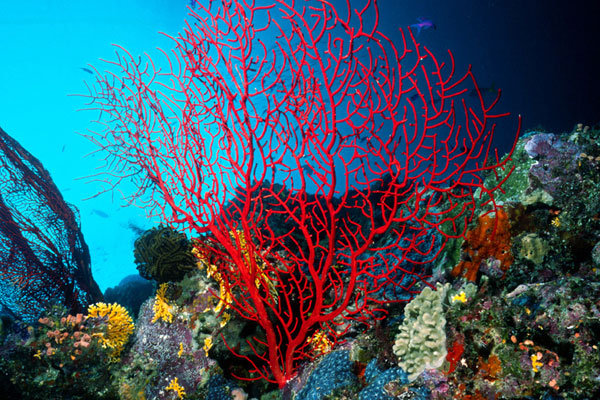What is a Coral Reef?
 |
| http://www.wired.com/images_blogs/wiredscience/2012/12/coral_reef.jpg |
How are they formed?
As mentioned before they are made by coral polyps. These invertebrates vary in size up to a foot in diameter. Coral reefs are formed almost entirely from these little animals, and each branch of a coral reef is a different colony of polyps. Their skeletons are calcium carbonate also known as limestone, and they feed at night.
 |
| http://nofishleft.files.wordpress.com/2010/09/coral_reef__7.jpg |
Coral reefs are large complex structures with many holes that are shared by many different species. Not all polyps build reefs, but the ones that do are the species I'll be talking about, because when they die they leave their skeletons behind and new polyps grow on top of them. They outer layer of coral has many polyps, but if you go further in we would find the skeletons of many older polyps. Other organisms that use shells like mollusks are also used to form the reef, although not to the same degree as polyps.
What are Coral Polyps?
Coral polyps are invertebrates that can vary in size up to a foot in diameter and be as small as an inch in diameter. They make their shells out of calcium carbonate, which is what the reef is made of when they die. Each polyp has a jelly body, and a mouth. They use the calcium carbonate from the seawater to build their skeleton. Coral polyps are nocturnal creatures, feeding only at night by exposing their tentacles (Coral Reef Alliance 2014).
| http://www.enchantedlearning.com/cgifs/Coralpolyp_bw.GIF |
They reproduce in a variety of ways. Some species of polyps are hermaphrodites like Star and Brain corals. There are other coral like Elkhorn and Boulder corals that produce one sex colonies, which requires many other coral to be present. One colony produces sperm and another colony produces the eggs. Other species of coral just put eggs and sperm into the water and hope they reach their destinations. The larvae go to the surface where they stay for a couple weeks they fall down the ocean surface and attach to a hard surface, such as the skeletons of other polyps, forming the coral reefs (Burke 2010).
What does Coral need to survive?
| http://www.oist.jp/sites/default/files/photos/20130712_Figure2_English.jpg |
They need sunlight for their symbiotic algae, zooxanthellae, to be able to do photosynthesis. Coral need warm water temperature to be able to survive, they have a range they can survive, but they generally cannot survive in colder waters that are below 60 degrees. The last thing they need to survive is saltwater, they cannot live outside of a certain amount of salt. They also use salt waters in oceans to get the calcium carbonate for their shells among other nutrients (Burke 2010).
Different types of Reefs
 |
| http://www.naturefoundationsxm.org/images/coral/coral-reef-structures.jpg |
No comments:
Post a Comment